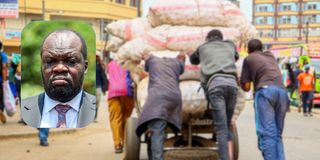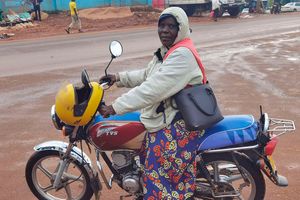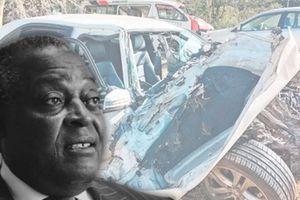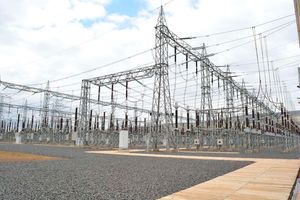
Kileleshwa Ward Representative Robert Alai has tabled a Motion that seeks to introduce guidelines for all forms of non-motorised means of transport (NMT) in Nairobi.
Picture this: You are unable to carry your luggage in the streets of Nairobi and you decide to hire a trolley operator. Two minutes into the walk, the man springs his way out of your view amid choking traffic, hustle, and bustle of the City in the Sun.
Usually, what follows is a literal ‘manhunt’ that may leave you either at a loss or full of regrets. Or both.
And for motorists, your car being hit or scratched by a handcart is not uncommon on Nairobi roads.
The dilemma for many drivers is what to do next because the so-called ‘vehicles’ in the Traffic Act neither have registration numbers nor insurance cover.
But all these could soon change should a new Motion currently before the Nairobi City County assembly see the light of day.
The Motion tabled by Kileleshwa Ward Representative Robert Alai seeks to introduce guidelines for all forms of non-motorised means of transport (NMT) in the Kenyan capital.
The Motion targets wheelbarrows, rickshaws, mkokoteni (handcarts), animal-drawn carts, luggage trolleys, and even tricycles.
Number plates
One of the key proposals is the introduction of number plates for the vehicles above, with an additional requirement for operators to wear reflective jackets and operation badges in an effort to boost discipline.
Each of the vehicles, the Motion states, will have to be registered and issued with unique reflective number plates.
Mr Alai on Tuesday told the county assembly that the new Motion would improve safety for road users and ease congestion in Nairobi.
“The rise in use of non-motorised means of transport has led to congestion in the city, with handcarts and trolleys being the lead cause of accidents resulting from high disregard to lane discipline by users and use of reflective jackets,” Mr Alai said while tabling the Motion.
Also read: Top 10 Kenyan deadliest highways
“Most non-motorised operators being road users, lack suitable road safety knowledge and insurance cover in the event of an accident.”
Non-motorised means of transport are recognised under the Traffic Act 1998 but motorists often struggle to get compensation after an accident due to the lack of proper regulation and identification of operators.
If passed by the county assembly, operators will be required to be issued with an insurance policy that will ensure the safety of other road users. If adopted, the Motion grants the operators six months to comply with the insurance directive.
Non-motorised means of transport account for 45 per cent of the mobility carried out in Nairobi, according to a survey by the United Nations Environmental Programme.
A study carried out by the Nairobi Metropolitan Service (NMS) in 2020 found that 2.27 million trips per day in the city center are made by NMT users.
It also found out that NMT users account for a total of 66.3 per cent of the traffic fatalities that occur in Nairobi.
Mr Alai explained that by wearing reflective jackets, upholding lane discipline, and wearing badges, NMT operators will be responsible and more organised to reduce the incidence of accidents.
“This is about discipline and regulating the sector to ensure that we have created a safe space for the residents of Nairobi,” he added.
Despite its wide usage, Nairobi City has not developed adequate guidelines to promote order and discipline in the sector.
According to the Nairobi City County Transport Act, 2020, the County Executive Committee Member in charge of transport is in charge of NMT means of transport in the city centre.
The county executive will be mandated with the implementation of the regulations if the House adopts Mr Alai’s Motion.









